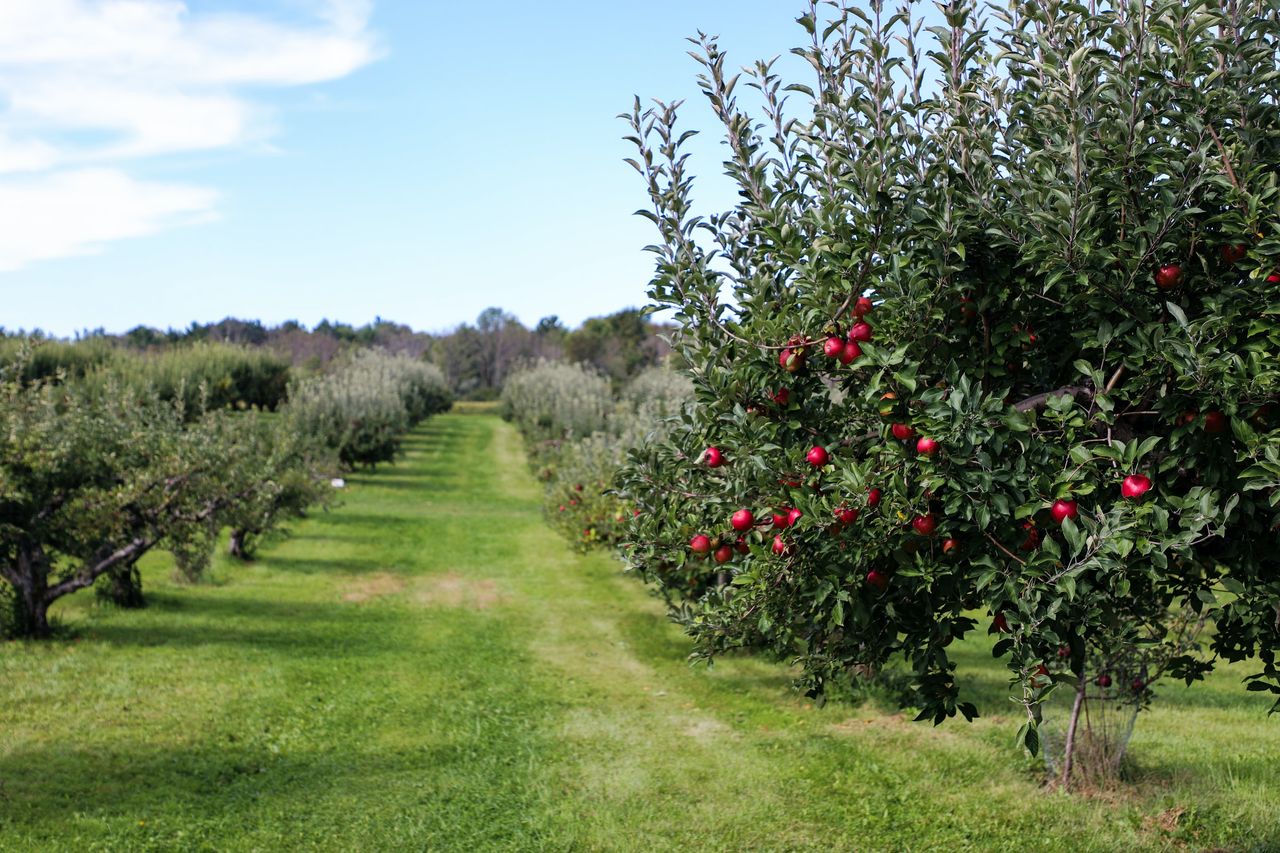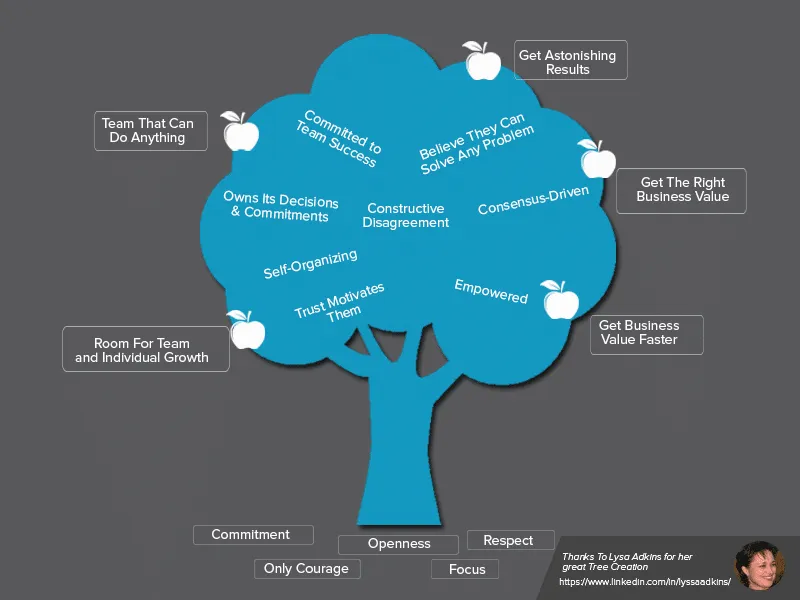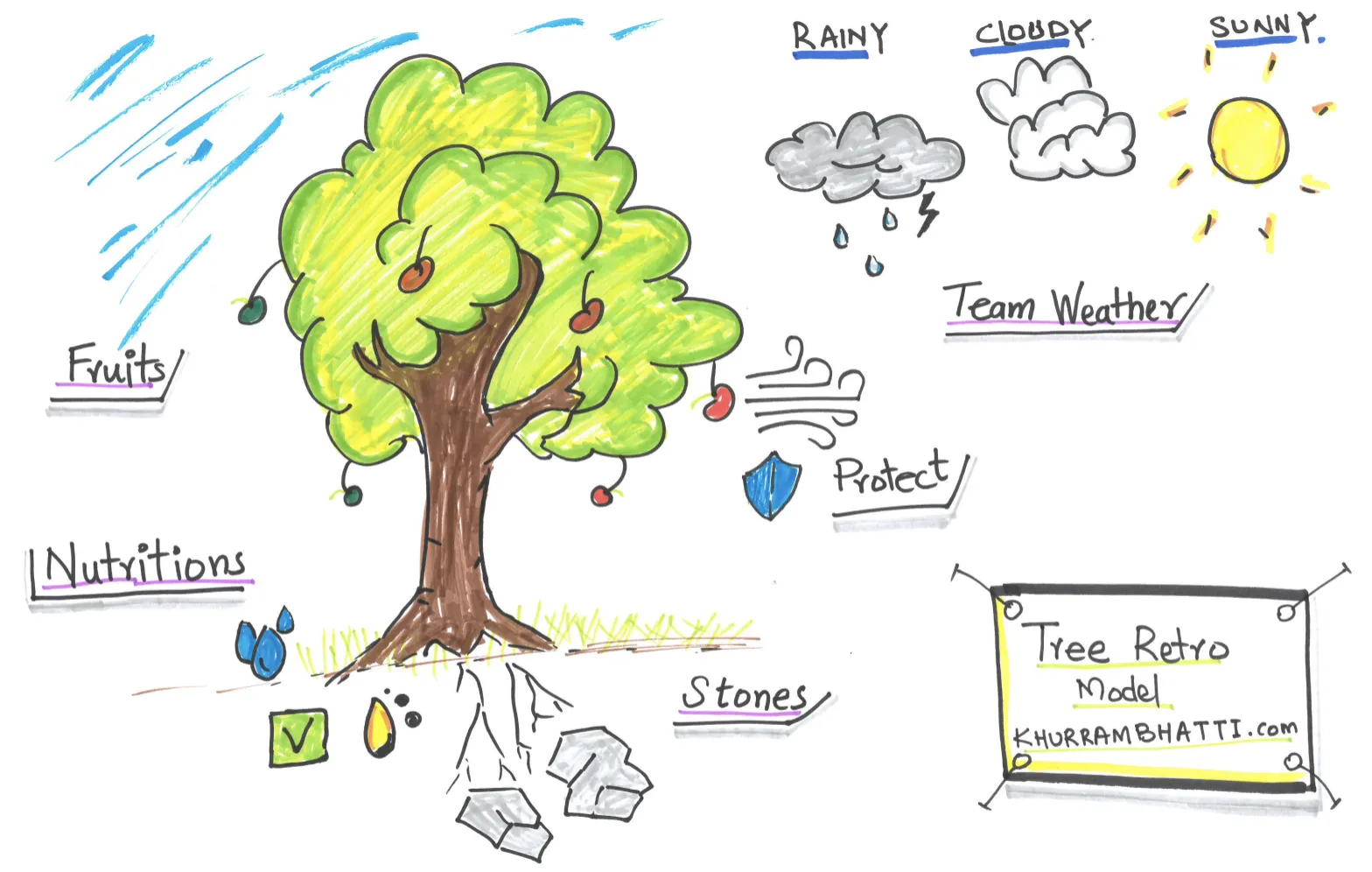
Lyssa Adkins is one of the ultimate mentors for Agile coaches, in part, as a result of her successful book Coaching Agile Teams: A Companion for Scrum Masters, Agile Coaches and Project Managers in Transition. Since its first publication in 2010, this provocative guide to coaching has helped many Agilists reap powerful benefits for the teams they have served. Further, many techniques described in it have become popular tools for Agile teams on the quest for continuous improvement.
One of the tools Adkins describes in great detail is referred to as the High Performance Tree, a visual tool that effectively illustrates the environment required for Agile teams to work at their best.

Riffing off of Adkins’ idea, Ben Linders, another Agile coach and author of Getting Value Out of Agile Retrospectives has described a way that Agile teams can use the high performance tree model in order to organize their retrospectives around the concepts in describes using the metaphor of the tree.
This exercise can be run in different way depending on the maturity of the team. If you’re looking to run this exercise for a team that is just starting to ramp up with Scrum, Kanban, or another customer Agile framework, follow the steps below to facilitate an effective High Performance Tree retro with your group.
As a facilitator, your main responsibilities will include setting up the exercise as well as moderating the discussion around the format. To set up your tree retrospective, begin by drawing the shape of a tree with the five Scrum values at the base, to act as roots. For a new Agile team, this is a great chance to review the Scrum values and commit to them along with their team once again. The Scrum values are:
Commitment, meaning everyone is involved in developing the product or campaign and working towards a common objective with the rest of the core group.
Openness, meaning everyone is open to new ideas and listening to feedback in the quest for improving the process towards the common objective.
Only Courage speaks to the team’s ability to confront fear and support each other in times of uncertainty.
Focus, meaning the team members are committed to concentrating on the objectives of the sprint, without allowing distractions to get in the way.
Respect refers to the respect team members have for each other, each others’ abilities as well as the process in which they participate.
Facilitators should begin the tree retrospective by listing the values and briefly contextualizing them from the perspective of the team. Move forward by recording the characteristics of high-performance for your team by asking the group what a high-performing team looks like to them.
Common topics that will arise during this discussion are empowerment, being consensus-driven, being self-organized and making decisions around constructive disagreements. These concepts will act as the branches of the tree, listed as an intrinsic part of the tree’s crown.
Ask the team to discuss the fruits that will come from high-performing behaviors.
Typical topics that are raised include:
Getting high quality results
Achieving business value more quickly
Creating room for individuals to grow professionally and personally
Nurturing a team that can tackle any type of future objective

Continue by encouraging the team to ideate around what the tree needs to flourish. Evoke the imagery of sun, water, and ground to root the prompt in the metaphor. Ask the team to go even further by linking each of these necessary elements to aspects of their work process.
The team members might bring up necessities like the right process tools, the right experts on the team, more frequent touchpoints with dependencies and others.

If your team is not facing any significant impediments at this stage of the process, you can choose to step back and allow the conversation about ideas for nourishment of the High Performance Tree flourish, documenting action items to the side in order to build a game plan for next steps.
If the team could benefit from a deeper discussion about the challenges and are, instead, keeping the conversation superficial about nice-to-haves in the nutritions category, evoke the imagery of Team Weather.
Ask the team:
How would you describe the weather in this team? Have we had any rainy days during the last sprint?
This prompt might encourage some challenges from the work process to surface. These types of conversations have the potential to surface more detailed conversations about the barriers the team is coming up against.
As usual document the takeaways in a format that is as actionable as possible and then confirm them with the team. Assign owners based on volunteers and follow up in the next retro, no matter its format.
Head over to your dashboard in ScatterSpoke to set up a virtual tree retrospective with your remote or co-located team in the form of a canvas or a column-based style!